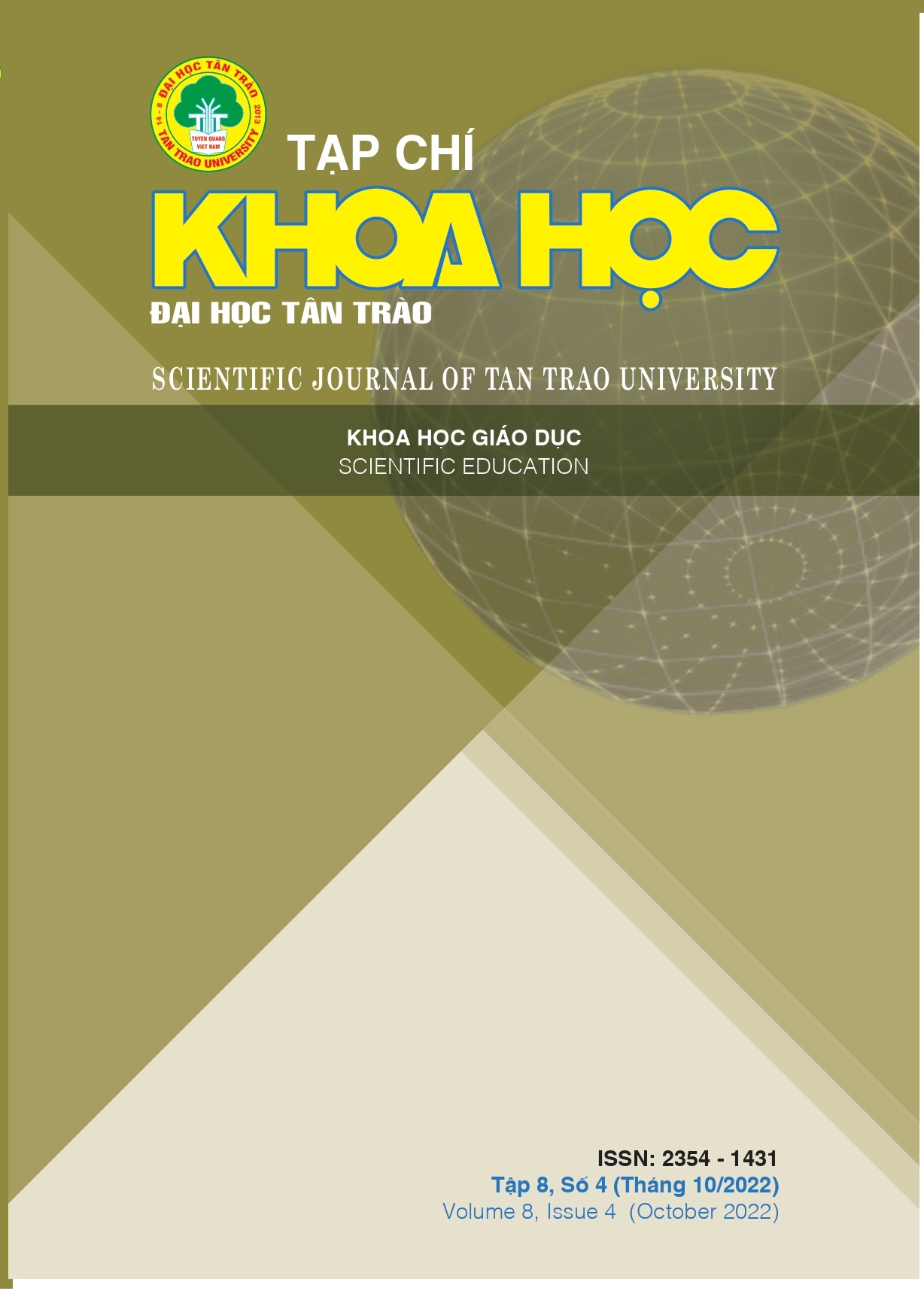THỰC TRẠNG TẬP LUYỆN YOGA TẠI CÁC TRUNG TÂM YOGA TRÊN ĐỊA BÀN THÀNH PHỐ TUYÊN QUANG
DOI:
https://doi.org/10.51453/2354-1431/2022/829Từ khóa:
Yoga, chỉ số sinh hóa máu, luyện tập Yoga.Tóm tắt
Bằng việc sử dụng phương pháp nghiên cứu, phân tích các chỉ số sinh hóa máu của người tham gia tập luyện. Đề tài đã đánh giá được thực trạng tập luyện Yoga tại các trung tâm Yoga trên địa bàn thành phố Tuyên Quang. Kết quả cho thấy về cơ sở vật chất, trình độ của giáo viên, việc tập luyện của người tập đều đạt ở mức “tốt” và “rất tốt”; hệ thống các bài tập dành cho người mới tập đều được chia làm 3 cấp độ: dễ, vừa và khó, các bài tập được lựa chọn cơ bản là giống nhau với 30 bài tập chính, chỉ khác nhau ở một vài bài tập biến thể. Thực trạng số người có chỉ số sinh hóa máu cao hơn mức bình thường là khá cao, cụ thể như sau: Chỉ số Glucose có 10/71 người cao hơn mức trung bình chiếm 14.1%; Chỉ số Ure có 08/71 người cao hơn mức trung bình chiếm 11.3%; Chỉ số Creatinin có 03/71 người cao hơn mức trung bình chiếm 4.2%; Chỉ số Cholesteron có 26/71 người cao hơn mức trung bình chiếm 36.6%; Chỉ số Triglicerid có 22/71 người cao hơn mức trung bình chiếm 31.0%.
Tải xuống
Tài liệu tham khảo
[1]. https://en.wikipedia.org .
[2]. Le Dinh Sang (2010), Hematology and blood transfusion , Medical Publishing House.
[3]. Board of Supervisors Yiengan (2015), Techniques & Practice of Yoga , Translation: Nguyen Thi Hong Van, Women's Publishing House
[4]. Swami Vishnu Devananda (2010), Yoga Encyclopedia, Translator: Han Thi Thu Van , Times Publishing House .
Tải xuống
Đã Xuất bản
Cách trích dẫn
Số
Chuyên mục
Giấy phép

Tác phẩm này được cấp phép theo Giấy phép Quốc tế Creative Commons Attribution-ShareAlike 4.0 .
Bài báo được xuất bản ở Tạp chí Khoa học Đại học Tân Trào được cấp phép theo giấy phép Ghi công - Chia sẻ tương tự 4.0 Quốc tế (CC BY-SA). Theo đó, các tác giả khác có thể sao chép, chuyển đổi hay phân phối lại các bài báo này với mục đích hợp pháp trên mọi phương tiện, với điều kiện họ trích dẫn tác giả, Tạp chí Khoa học Đại học Tân Trào và đường link đến bản quyền; nêu rõ các thay đổi đã thực hiện và các nghiên cứu đăng lại được tiến hành theo cùng một bản quyền.
Bản quyền bài báo thuộc về các tác giả, không hạn chế số lượng. Tạp chí Khoa học Tân Trào được cấp giấy phép không độc quyền để xuất bản bài báo với tư cách nhà xuất bản nguồn, kèm theo quyền thương mại để in các bài báo cung cấp cho các thư viện và cá nhân.
Mặc dù các điều khoản của giấy phép CC BY-SA không dành cho các tác giả (với tư cách là người giữ bản quyền của bài báo, họ không bị hạn chế về quyền hạn), khi gửi bài tới Tạp chí Khoa học Đại học Tân Trào, tác giả cần đáp ứng quyền của độc giả, và cần cấp quyền cho bên thứ 3 sử dụng bài báo của họ trong phạm vi của giấy phép.






